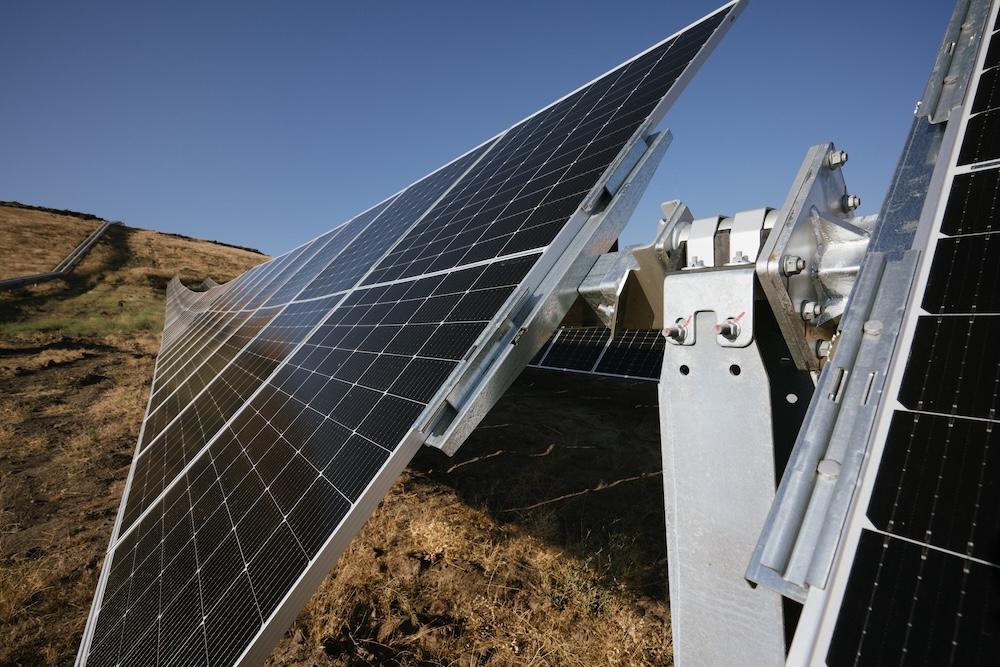Solar Tracker Market Outlook: Unlocking Potential Through Innovation and Utility-Scale Solar Projects

As the world races toward a cleaner, greener energy future, solar power continues to lead the way. Among the technologies driving this momentum is solar tracking, a system that automatically orients solar panels toward the sun to maximize energy capture. The solar tracker market is rapidly evolving, with significant opportunities emerging across sectors and regions. Let’s explore what’s driving this growth and where the biggest opportunities lie.
Understanding Solar Trackers
Solar trackers adjust the position of solar panels throughout the day to follow the sun's path. This increases the efficiency of photovoltaic (PV) systems by 15–30% compared to fixed systems. There are two main types of solar trackers:
-
Single-axis trackers: These follow the sun’s movement from east to west.
-
Dual-axis trackers: These follow the sun’s movement both east–west and up–down, capturing even more energy but at a higher cost.
Though dual-axis trackers offer higher efficiency, single-axis systems dominate the market due to their balance of performance and cost-effectiveness.
Market Growth and Projections
The global solar tracker market was valued at USD 10.2 billion in 2023 and is projected to reach USD 20.6 billion by 2030, growing at a CAGR of around 10%. This growth is being fueled by the rising adoption of solar energy, government incentives, and technological innovation in the solar power industry.
Key Market Drivers
1. Government Support and Policy Incentives
Many countries are implementing aggressive clean energy policies to meet climate goals. Tax credits, subsidies, and feed-in tariffs encourage the adoption of advanced solar technologies, including solar trackers. In the U.S., the Investment Tax Credit (ITC) continues to play a vital role in solar deployment.
2. Rising Demand for Utility-Scale Projects
Large-scale solar farms benefit most from solar tracking systems due to economies of scale. As utility-scale projects expand globally—from North America to the Middle East and Asia—demand for solar trackers is surging.
3. Technological Advancements
Modern trackers are smarter, more reliable, and easier to install than ever before. Innovations in AI and IoT allow predictive tracking and remote monitoring, optimizing performance and reducing maintenance costs.
4. Falling Costs of Solar Panels
The declining cost of solar modules has shifted focus to maximizing energy yields from installations. Trackers help extract more energy from each panel, making them an increasingly cost-effective investment.
Regional Opportunities
North America
The U.S. is a global leader in solar tracker adoption, particularly in the utility sector. With continued federal support and the expansion of solar farms in the southwest, opportunities remain strong.
Europe
While Europe has traditionally favored rooftop solar, large-scale installations are gaining ground. Countries like Spain and Italy are ideal markets due to high solar irradiance and favorable government policies.
Asia-Pacific
China and India offer immense potential due to rising energy demand, supportive policies, and ambitious solar targets. India’s focus on expanding its solar capacity to 280 GW by 2030 opens significant tracker market opportunities.
Middle East & Africa
With abundant sunlight and growing investment in renewables, this region is becoming a hotspot for solar tracker deployment. Projects in the UAE, Saudi Arabia, and South Africa are particularly noteworthy.
Opportunities Across the Value Chain
Manufacturers
Companies that produce tracker components, from motors to control systems, can capitalize on the expanding market. Customization and innovation will be key differentiators.
Installers and EPCs
As tracker technology becomes more mainstream, engineering, procurement, and construction (EPC) firms will find increased demand for their expertise in designing and building tracker-equipped systems.
Software and Data Services
There's growing demand for monitoring platforms that provide performance analytics and predictive maintenance. Companies offering software solutions can tap into a niche yet vital part of the value chain.
Challenges to Watch
While the market outlook is promising, challenges remain. Higher upfront costs compared to fixed systems, complex maintenance requirements, and land-use limitations can pose hurdles. However, ongoing innovation is addressing these issues, with improved durability, lower maintenance systems, and AI-based optimization models entering the scene.
The Bottom Line
The solar tracker market is on a strong growth trajectory, driven by the global clean energy transition and the need for higher solar efficiency. From policy support and tech innovation to emerging regional markets, the opportunities are vast and varied. As the solar industry matures, trackers will play a key role in shaping the next generation of solar energy systems.
- Art
- Causes
- Crafts
- Dance
- Drinks
- Film
- Fitness
- Food
- Games
- Gardening
- Health
- Home
- Literature
- Music
- Networking
- Other
- Party
- Religion
- Shopping
- Sports
- Theater
- Wellness


